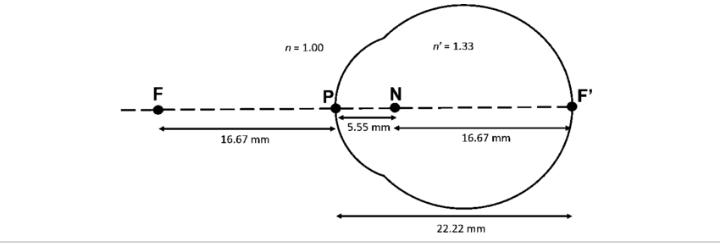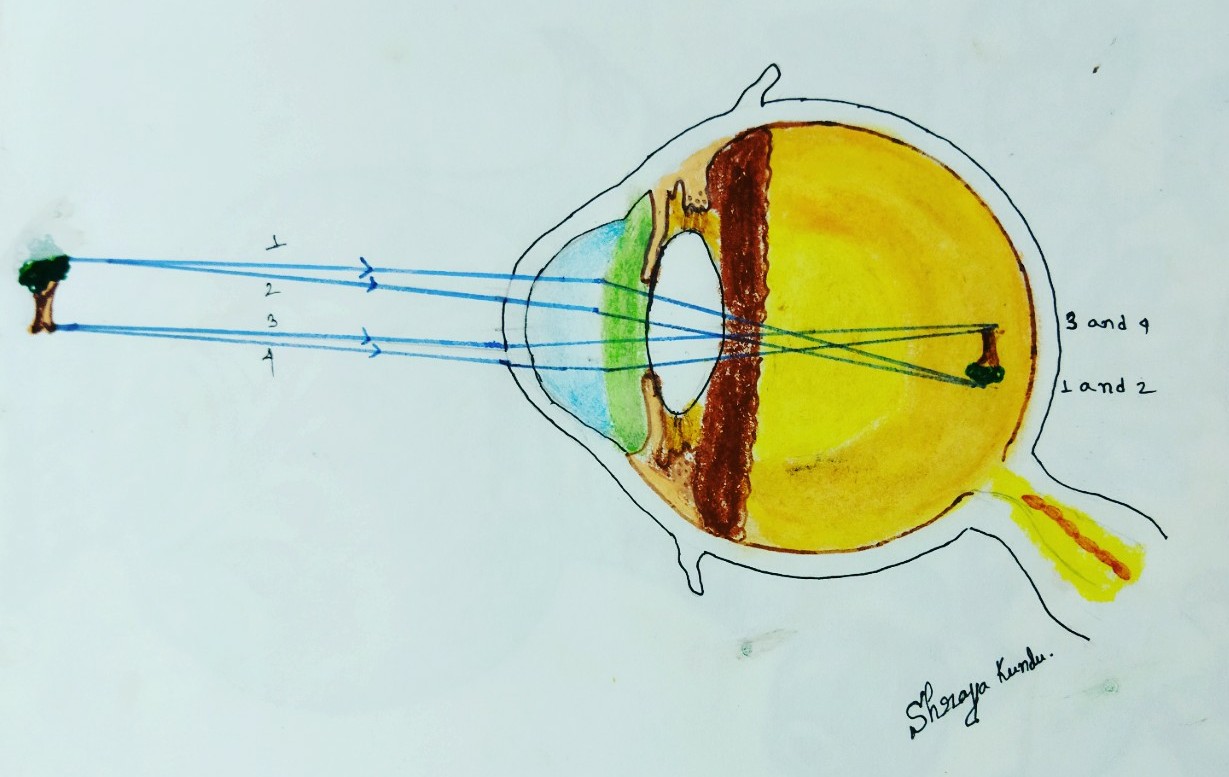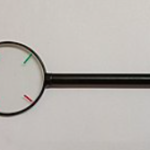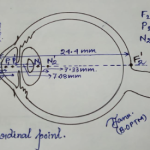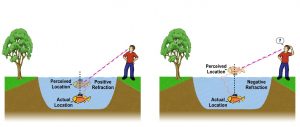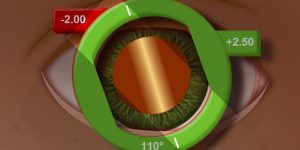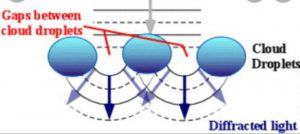Schematic eye:- Schematic eye is a physical or mathematical model that represents the basic optical feature of the real eye.

Objectives:- To provide a basis for the theoretical studies of the eye as an optical instrument, teaching aids in optics, optometry, ophthalmology, vision, and visual perception.
History:- Listing and Gauss while studying refraction by lens combination, concluded that for a homocentric lenses system there exist three pairs of cardinal points
1. two principal foci
2. two principal points
3. two nodal points
These all are situated on the principal axis of the system. The models of schematic eyes developed by Listing, Tscherning, and Helmholtz greatly advanced the understanding of the optics of the eye.
However, Gullstrand developed the most authoritative model of the eye.
According to the Gullstrand model:-
Cardinal data:-
Principal foci F1 and F2 lie 15.7 mm in front and 24.4 mm behind the cornea.
Principal points P1 and P2 lie in the anterior chamber 1.35 mm and 1.60 mm behind the anterior surface of the cornea.
Nodal points N1 and N2 lie in the posterior part of the lens 7.08 mm and 7.33 mm behind the anterior surface of the cornea.
The total dioptric power of this schematic eye is 58.64D.
Refractive indices:-
Cornea 1.376
Aqueous 1.336
Lens cortex 1.386
Lens Core 1.406
Vitreous 1.336
Radius of curvature of the refractive surface
Anterior surface of the cornea 7.70 mm
Posterior surface of cornea 6.70mm
Anterior surface of the lens 10.00mm
Posterior surface of the lens 6.00mm
Anterior surface of lens core 7.91mm
Posterior surface of the lens core 5.76mm
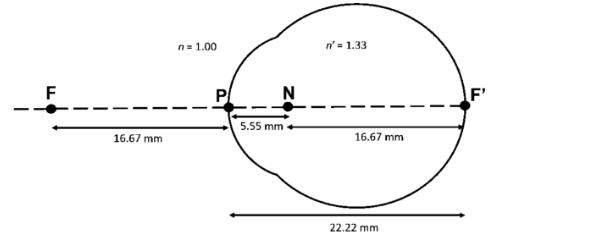
THE REDUCED EYE
The reduced eye is an idealized Model of the optics of the human eye. Listing and Donders have simplified the reduced eye.
Listing’s Reduced Eye
A single principal point and a single nodal point lying midway between two principal points and two nodal points respectively is called Listing’s reduced eye.
Data of Listing’s reduced eye :
• Principle Point (P) lies 1.5 mm behind the anterior surface of cornea.
• Nodal point (N) is situated 7.2 mm behind the anterior surface of cornea.
• Anterior focal point (F¹) is 15.7 mm in front of the anterior surface of the cornea.
• Posterior focal point (F2) s 24.4 mm behind the anterior surface of the cornea .
• Anterior focal length (f¹) is 17.2 mm (15.7 +1.5)
• Posterior focal point(F2) is 22.9 mm (24.4- 1.5)
• Total dioptric power of the reduced eye is about +60 D ( +43D is cornea and +17D crystalline lens).
Drawing –
Donders’ Reduced Eye
The optical system of the eye is treated as a single article reflecting surface. This is called Donders’ reduced eye.
Data of Donders’ reduced eye
• Principle point lies 2 mm behind the corner with a radius of curvature of 5mm
•Nodal point is situated 5mm behind the plane.
•Anterior focal(f1) length is a 15 mm •Posterior focal (f2) length is 20mm •Refractive index is 1.336
•Total power is +60D
Significance of the reduced eye –
▪︎ Designing the instrument
▪︎ Making calculation
▪︎ Localizing a foreign body
▪︎ Derived formula for the intraocular lens power
